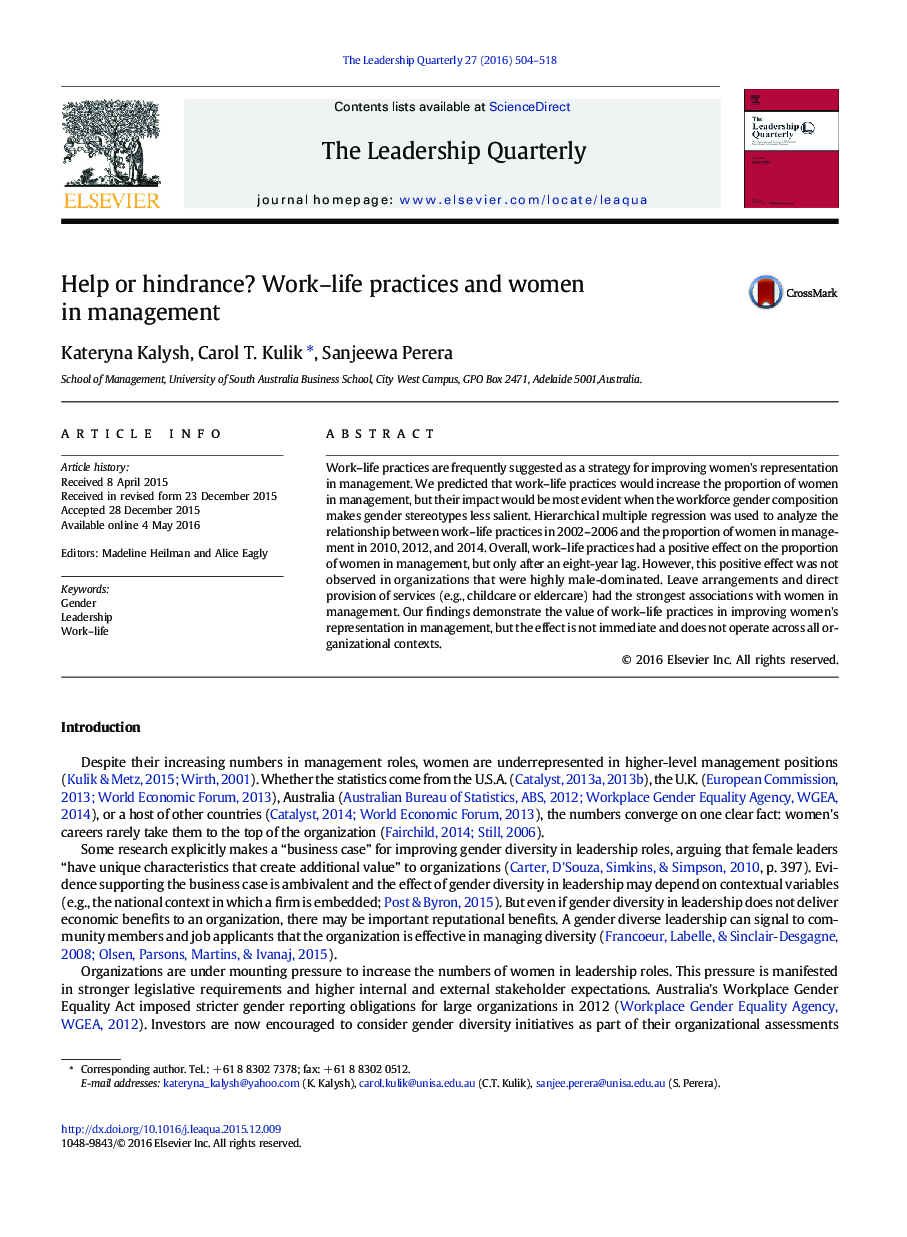| Article ID | Journal | Published Year | Pages | File Type |
|---|---|---|---|---|
| 887699 | The Leadership Quarterly | 2016 | 15 Pages |
Work–life practices are frequently suggested as a strategy for improving women's representation in management. We predicted that work–life practices would increase the proportion of women in management, but their impact would be most evident when the workforce gender composition makes gender stereotypes less salient. Hierarchical multiple regression was used to analyze the relationship between work–life practices in 2002–2006 and the proportion of women in management in 2010, 2012, and 2014. Overall, work–life practices had a positive effect on the proportion of women in management, but only after an eight-year lag. However, this positive effect was not observed in organizations that were highly male-dominated. Leave arrangements and direct provision of services (e.g., childcare or eldercare) had the strongest associations with women in management. Our findings demonstrate the value of work–life practices in improving women's representation in management, but the effect is not immediate and does not operate across all organizational contexts.
